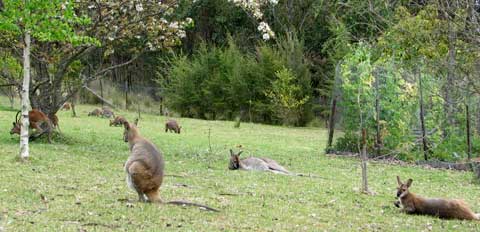
As you can see, Eastern Red-necked wallabies rule here. They know it; males, females, joeys — they do as they please in my yard. I simply add more wire netting guards to protect what pleases me. I have resigned myself to the fact that I will not have flowers unless they are specific inedible bulbs, or above wallaby reach.
So I have placed a large pot on my verandah and planted seeds of what I hope will be a deep red nasturtium — pretty and tasty. The seedlings have just emerged.
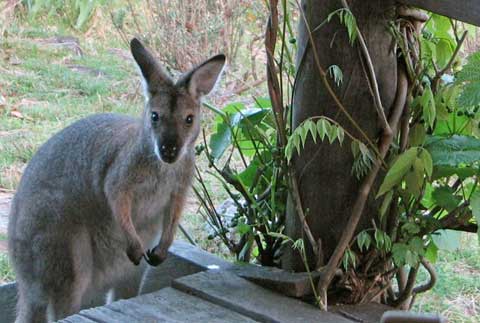
The very day they did, I happened to hear an odd thump on the verandah steps. I looked up and there was a youngish wallaby looking at me from the top step. My first thought was ‘cute’, my second was ‘not a good idea’ — thinking of the nasturtiums to come. So I went out and shooed it back down the steps.
I had assumed it was a more inquisitive wallaby than the others. But it came back several times in the next few days — definitely the same young female — and I reprimanded her and sent her back down the steps.
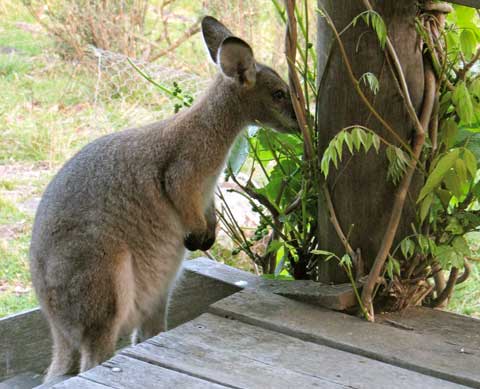
I finally realised the appeal when I caught her eating the new shoots of the ornamental grape vine. At ground level they have already done so; I’ve been meaning to get around to putting netting across them or I won’t get enough summer shade.
Now I might have to put a gate across the verandah, or I’ll get neither shade nor nasturtiums. Quolls, possums, pythons, black snakes, lizards, bush rats, antechinus and the odd nesting bird have all taken advantage of my verandah. It’s bit much if the wallabies want to make a takeover bid too.
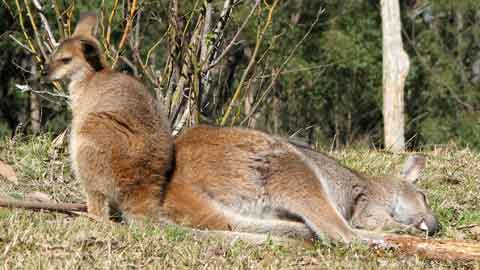


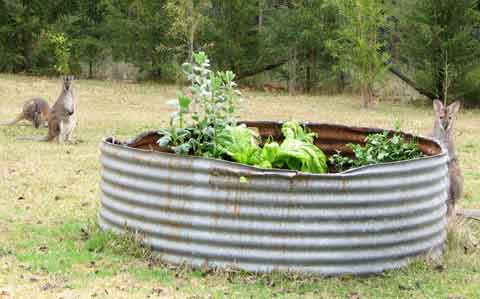
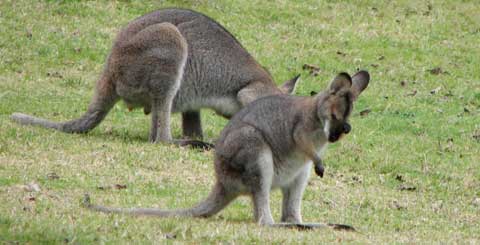
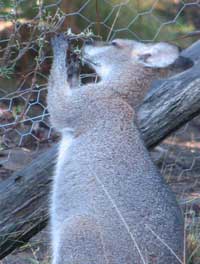 Home on the mountain at last, I was greeted by a heavily pruned garden ruled by wallabies.
Home on the mountain at last, I was greeted by a heavily pruned garden ruled by wallabies. 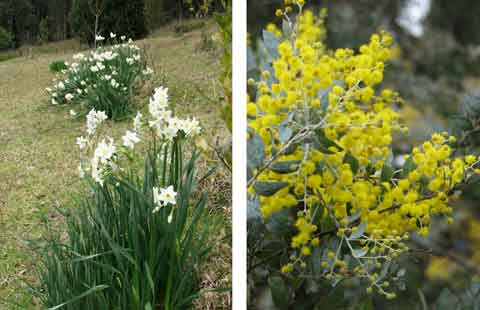
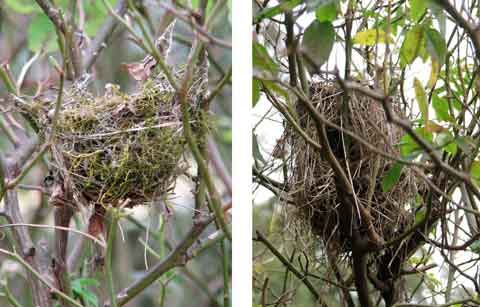

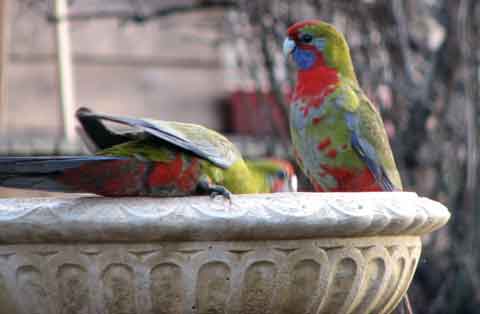
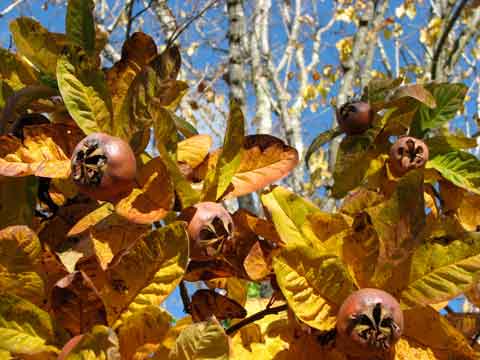



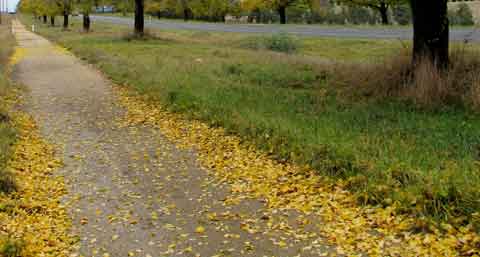
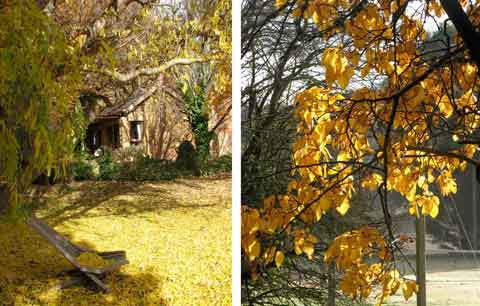
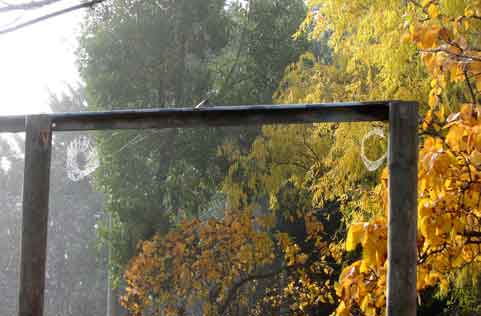
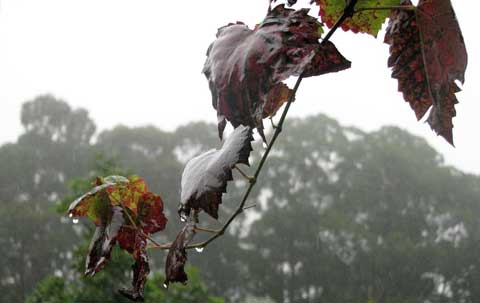 Typical of April, it’s been raining here, offering the sort of disappointingly drizzly days I associated with Saturdays when I was a child. The main splash of colour I see from my desk is the Glory Vine, the grapeless ornamental grape vine that decorates and shades my verandah.
Typical of April, it’s been raining here, offering the sort of disappointingly drizzly days I associated with Saturdays when I was a child. The main splash of colour I see from my desk is the Glory Vine, the grapeless ornamental grape vine that decorates and shades my verandah.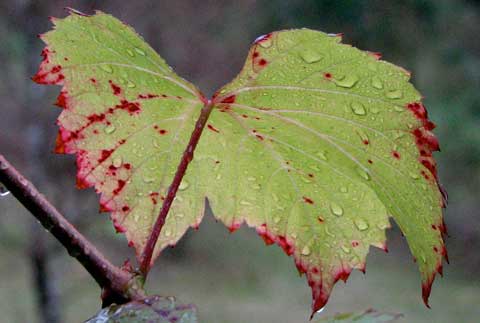 But not uniformly or in unison. Some are already deep burgundy with blackish veins, presaging their winter demise, while others stay summer green, stained at the edges with strawberry juice.
But not uniformly or in unison. Some are already deep burgundy with blackish veins, presaging their winter demise, while others stay summer green, stained at the edges with strawberry juice. In between these extremes there are pale lemons and limes, vivid rusts and scarlets, splotches and streaks like blood, a riot of colour dripping with raindrops — just for me.
In between these extremes there are pale lemons and limes, vivid rusts and scarlets, splotches and streaks like blood, a riot of colour dripping with raindrops — just for me.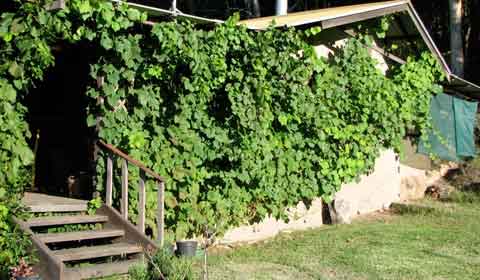 Each year the Crimson Glory Vine powers up from its woody trunk and heavily pruned short stems — and goes crazy along my western wall. I am amazed anew at its vigour.
Each year the Crimson Glory Vine powers up from its woody trunk and heavily pruned short stems — and goes crazy along my western wall. I am amazed anew at its vigour. 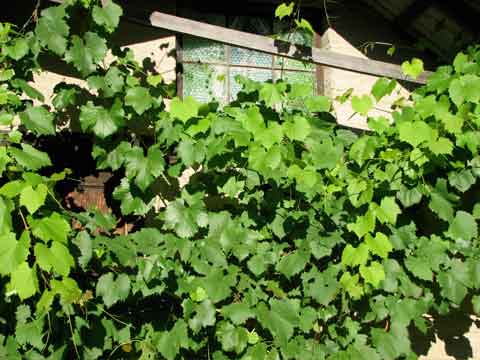 On the main western wall the greenery brings shade to the unused door and the upper fixed window; there is a leadlight window to the right of the door, but so densely shaded that it is invisible.
On the main western wall the greenery brings shade to the unused door and the upper fixed window; there is a leadlight window to the right of the door, but so densely shaded that it is invisible. 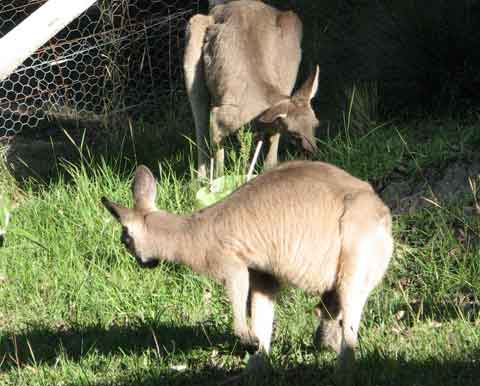 One late afternoon I opened all four gates into the house yard. You will not have your wallaby photos obscured by netting from now on.
One late afternoon I opened all four gates into the house yard. You will not have your wallaby photos obscured by netting from now on.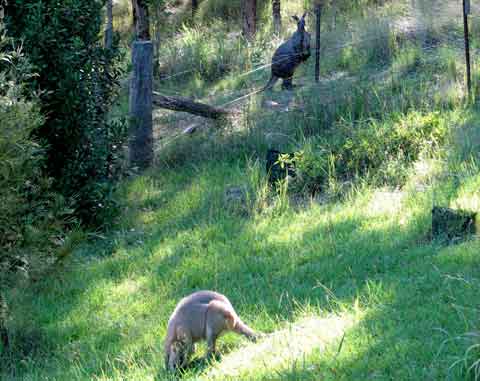 Slowly they ventured in. Wallabies first. The wallaroo looked on disapprovingly from outside the fence, where he stayed. Kangaroos are coming in too, but not close yet.
Slowly they ventured in. Wallabies first. The wallaroo looked on disapprovingly from outside the fence, where he stayed. Kangaroos are coming in too, but not close yet. Soon they were everywhere, and over the next few days some began to rest inside the yard, using the shade of buildings and trees during the day. Some were more calm than others, some staying still as I walked past, others bolting in panic.
Soon they were everywhere, and over the next few days some began to rest inside the yard, using the shade of buildings and trees during the day. Some were more calm than others, some staying still as I walked past, others bolting in panic.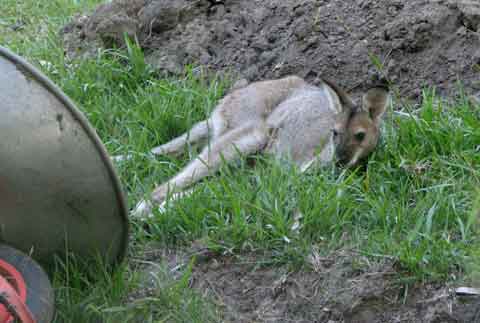 I immediately cleaned some strategic windows so I could take photos, like this laid-back wallaby. I enjoy observing the process of familiarisation. This is a new era of living here for me — and my neighbours.
I immediately cleaned some strategic windows so I could take photos, like this laid-back wallaby. I enjoy observing the process of familiarisation. This is a new era of living here for me — and my neighbours. About a metre away was the black snake, minding its own business and poking about near the earth I had just dumped. Damn! I could not continue work with it so close.
About a metre away was the black snake, minding its own business and poking about near the earth I had just dumped. Damn! I could not continue work with it so close.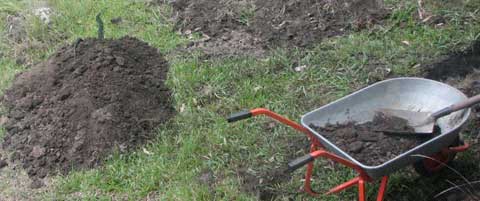 I ceded the territory and went around the house to the verandah to watch where it went. Having satisfied its curiosity, the snake continued up the slope to the gate.
I ceded the territory and went around the house to the verandah to watch where it went. Having satisfied its curiosity, the snake continued up the slope to the gate.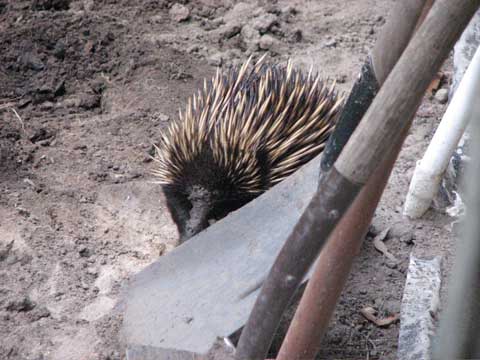 For that day I had also seen the echidna following the track, now barely distinguishable to me — but clearly not so to them. Like the snake, it detoured to investigate what my digging was turning up.
For that day I had also seen the echidna following the track, now barely distinguishable to me — but clearly not so to them. Like the snake, it detoured to investigate what my digging was turning up.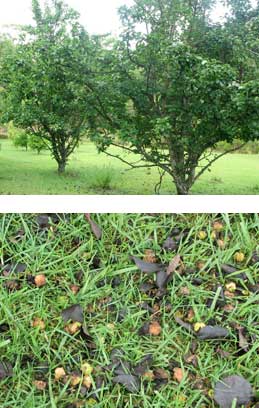 Usually the parrots and I share the crop from my two large Nashi pear trees. I get hundreds of fruit from the lower branches and they take even more hundreds from the higher ones.
Usually the parrots and I share the crop from my two large Nashi pear trees. I get hundreds of fruit from the lower branches and they take even more hundreds from the higher ones. Crimson Rosellas like this one are a major culprit but so are the red and green King Parrots, who are more elusive — or guilty.
Crimson Rosellas like this one are a major culprit but so are the red and green King Parrots, who are more elusive — or guilty.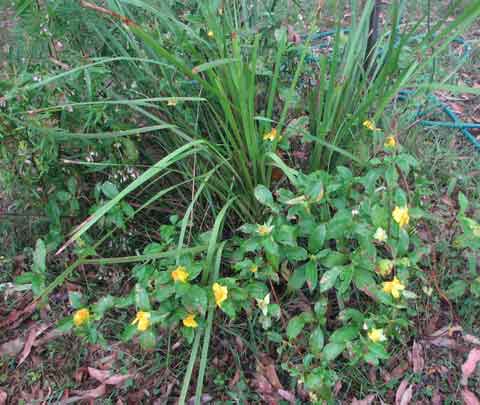 Without the need to sow or prune or feed, native plants appear, thrive and flower on my yard, where and as they choose.
Without the need to sow or prune or feed, native plants appear, thrive and flower on my yard, where and as they choose.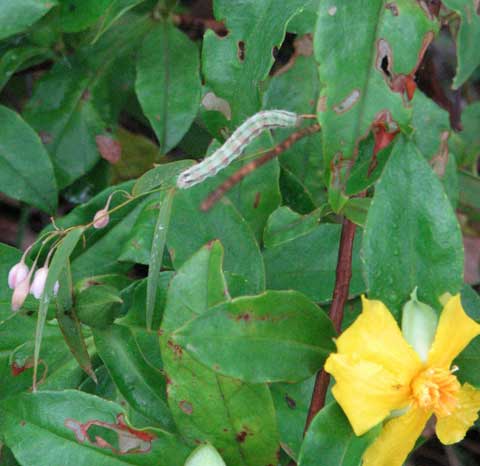 On looking closer at this little pocket of my self-sown garden, I saw it had an inhabitant – a green and pink and hairy caterpillar, which I cannot identify.
On looking closer at this little pocket of my self-sown garden, I saw it had an inhabitant – a green and pink and hairy caterpillar, which I cannot identify.